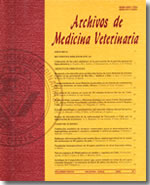Leptospirosis in dogs and cats: epidemiology, clinical disease, zoonotic implications and prevention
Main Article Content
Abstract
Leptospirosis is a zoonotic disease of worldwide distribution caused by spirochetes of the genus Leptospira. The genus includes a large number of serovars that may be sheed in the urine of infected animals creating a highly infectious source of transmission. Numerous species of wild and domestic mammals act as maintenance hosts and form reservoirs of the bacteria, with other species being incidental hosts that may develop the disease. In dogs and cats, the disease is caused by different serovars and while dogs act as maintenance host for some serovars, both species are incidental host for others. Dogs and cats may have frequent contact with wild and domestic farm animals, therefore they are an important link in the transmission route. Leptospira may survive in the environment which increases the complexity of the epidemiology. The presentation of the disease can be highly variable and, particularly for feline leptospirosis, not well described. Laboratory testing is essential for the diagnosis, however, it is complicated due to the need to discriminate between Leptospira infection in animals with clinical disease from leptospiral specific antibody responses in maintenance hosts, or in animals with subclinical infection. Infection in pets may have important economic and public health implications and because of the risk of transmission from pets to their owners and to other animals, preventive measures need to be applied and an increased awareness is adviced.

